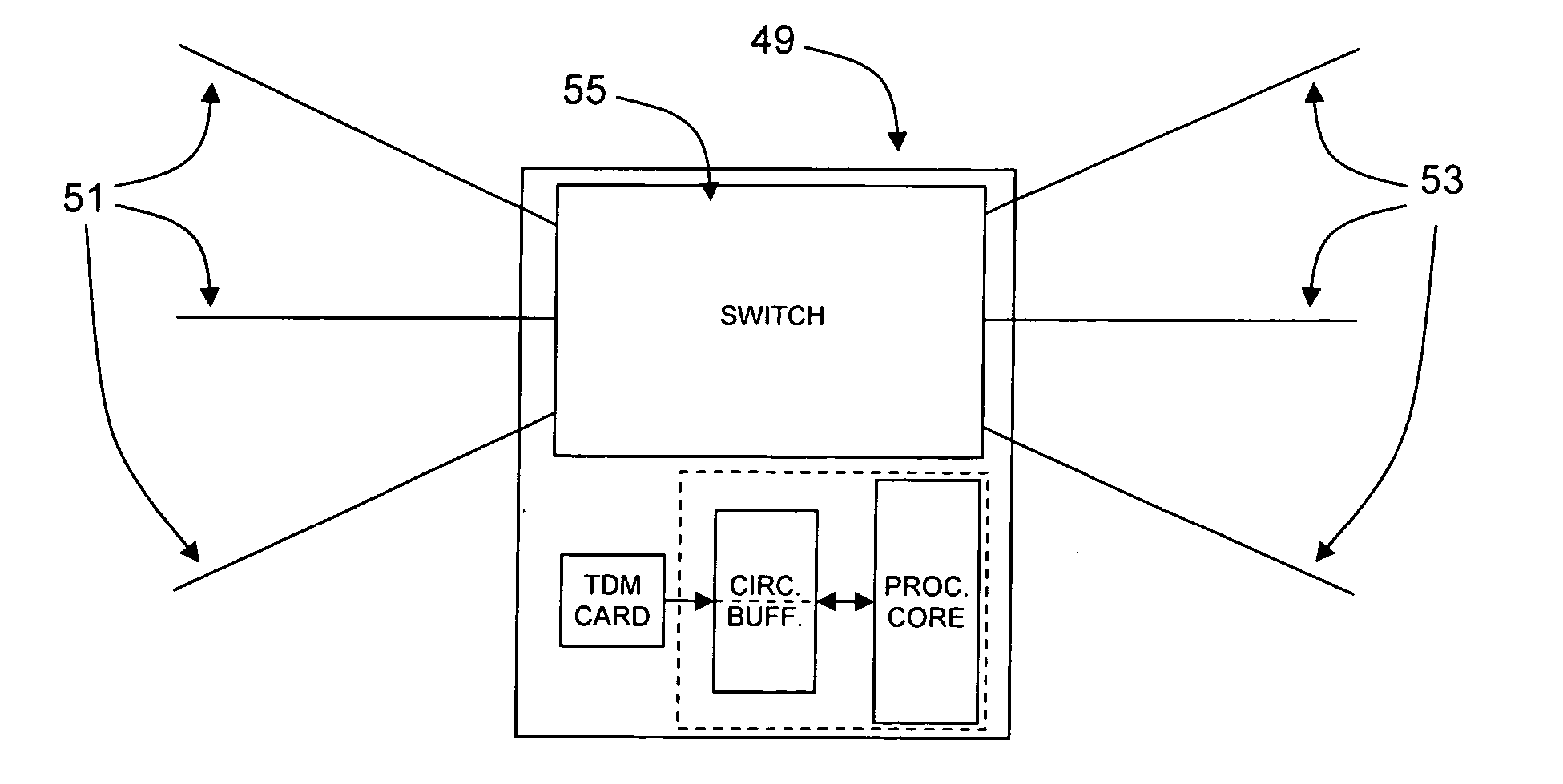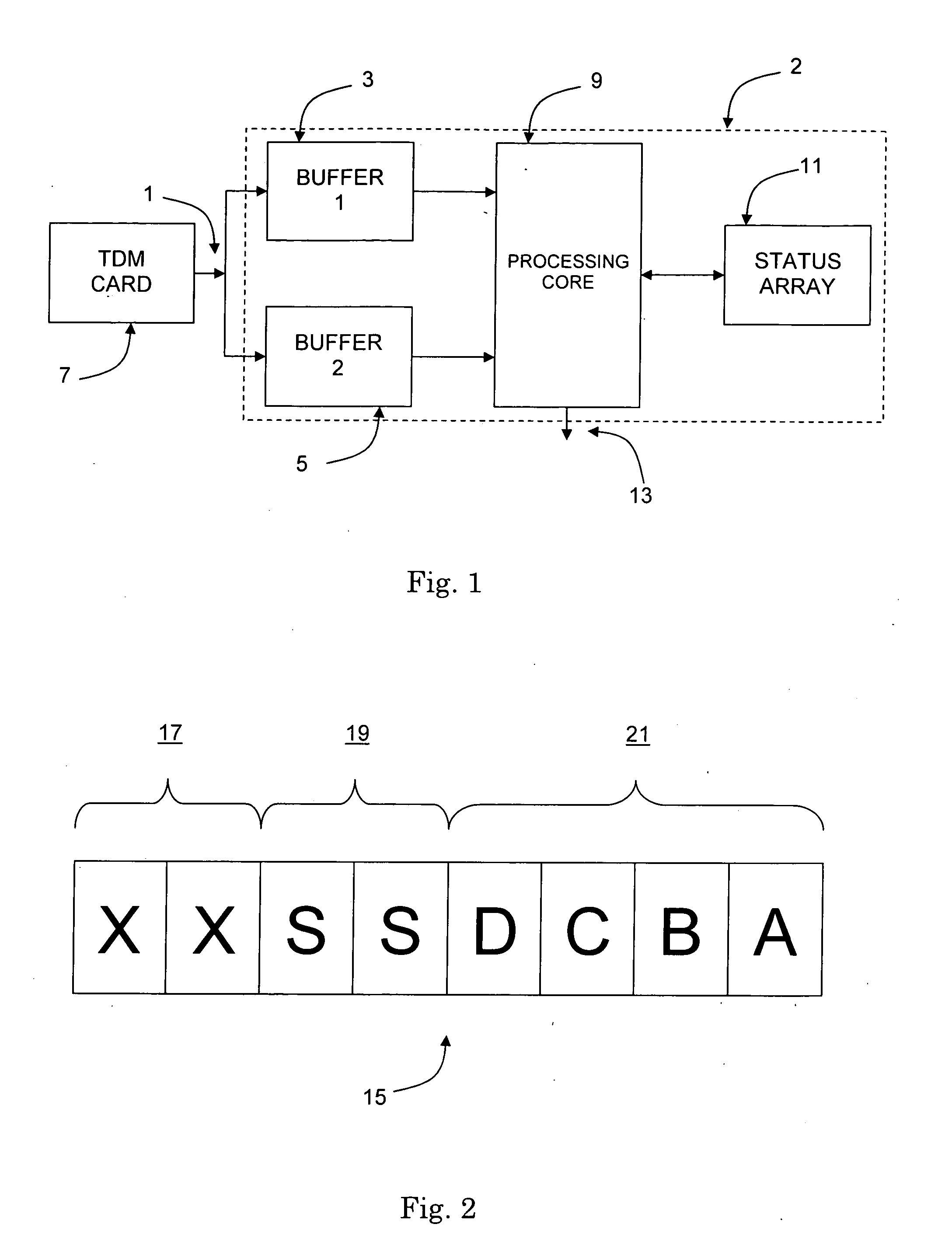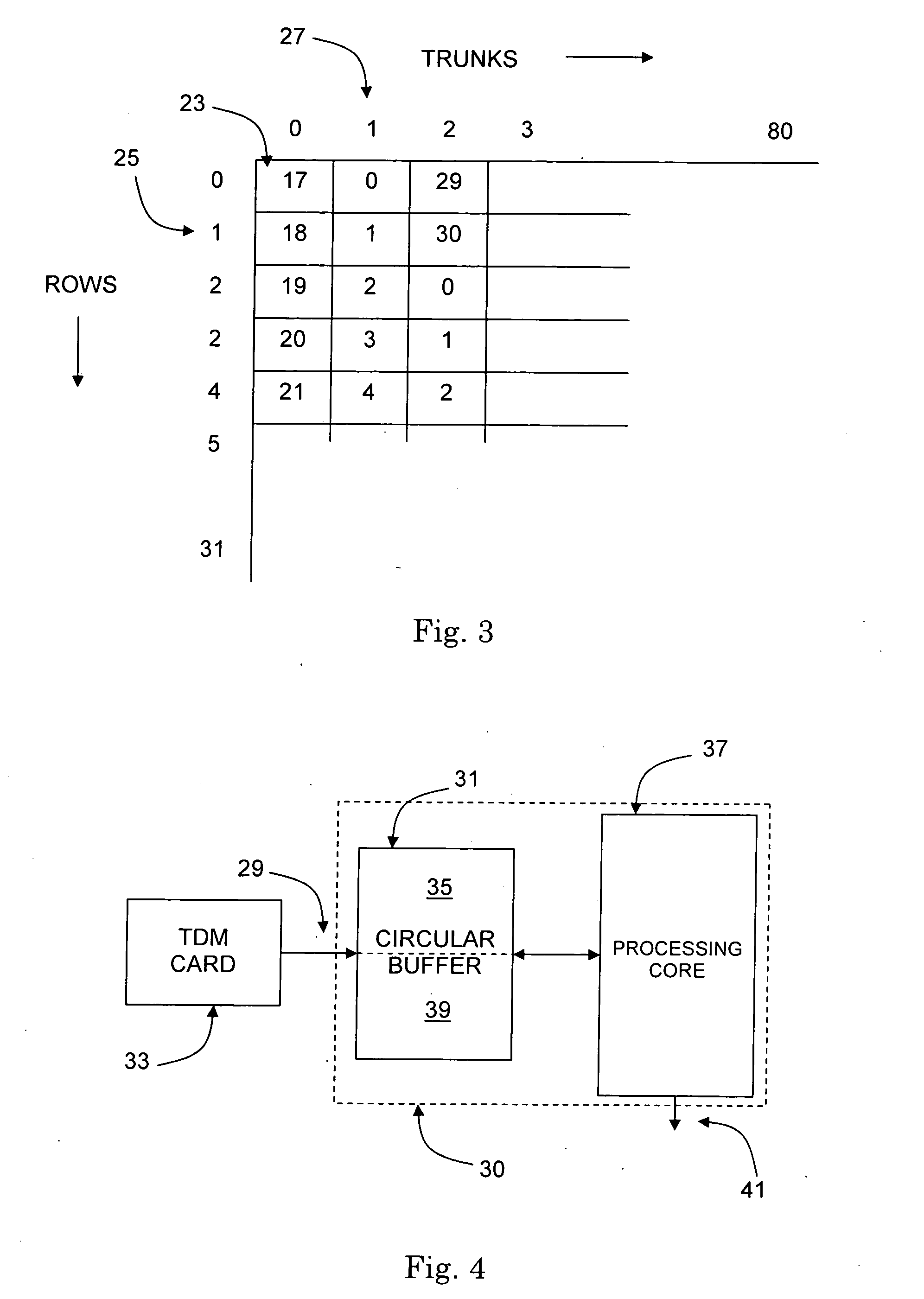Bulk CAS bit change detection
- Summary
- Abstract
- Description
- Claims
- Application Information
AI Technical Summary
Benefits of technology
Problems solved by technology
Method used
Image
Examples
Embodiment Construction
[0036]FIG. 2 shows a typical structure for a timeslot of CAS data. The timeslot of CAS data 15 is one byte long and contains the CAS data for a single communication channel.
[0037] The first two bits of data in the timeslot are framing bits 17. The framing bits 17 delineate one timeslot of CAS data form the adjacent timeslots of CAS data. The next two bits of data in the timeslot are synchronisation bits 19. The synchronisation bits 19 identify the timeslot of CAS data for the first communication channel in a trunk. The timeslots for all other communication channels in the trunk can then be identified by reference to this timeslot of CAS data. The final four bits of data in the time slot are the CAS data bits 21. The CAS data bits 21 contain information on line state changes, dialled digits and metering information for the communication channel to which the timeslot applies.
[0038]FIG. 3 shows a schematic representation of a typical format of CAS data for all of the communication ch...
PUM
 Login to View More
Login to View More Abstract
Description
Claims
Application Information
 Login to View More
Login to View More - R&D
- Intellectual Property
- Life Sciences
- Materials
- Tech Scout
- Unparalleled Data Quality
- Higher Quality Content
- 60% Fewer Hallucinations
Browse by: Latest US Patents, China's latest patents, Technical Efficacy Thesaurus, Application Domain, Technology Topic, Popular Technical Reports.
© 2025 PatSnap. All rights reserved.Legal|Privacy policy|Modern Slavery Act Transparency Statement|Sitemap|About US| Contact US: help@patsnap.com



